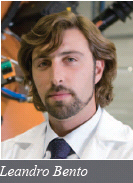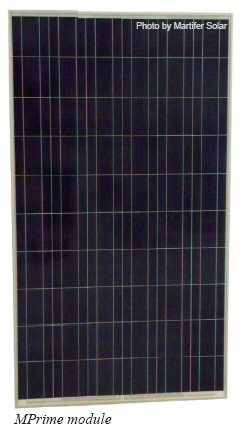By Leandro Bento
.jpg)
 With the continuous fall on the price of silicon, the other elements that determine the final price of the module are gaining relevance and elements as the scrap, rejection, rework, labor cost, and others, are being object of closer attention. With the continuous fall on the price of silicon, the other elements that determine the final price of the module are gaining relevance and elements as the scrap, rejection, rework, labor cost, and others, are being object of closer attention.
To date, the main concerns for PV module manufacturers were the reliability of the lamination, the aging of the solar components, especially those which filter the radiation to the cells, and the performance of the module, mainly focused on the cell’s efficiency and interconnections. Nowadays, producers know that their success cannot depend only on the reliability and the performance of the module; innovation and differentiation, associated to the cost effectiveness of the operation, will make a difference in the market.
In terms of components, until now the focus had always been on the solar cells, due to its high percentage on the final cost structure, but now that the other components are assuming a much more relevant role, the producers must carefully consider each decision they make. A good example of this need for continuous analysis and evolution is the encapsulation process, currently under study by several companies that are completely changing their approach to both the materials and the process.
 What about the possibility of using a different framing system? What type of material may replace the aluminum in the PV module’s framing, making it lighter and cheaper? What about the possibility of using a different framing system? What type of material may replace the aluminum in the PV module’s framing, making it lighter and cheaper?
There are still a lot of questions to be answered, and each one of those questions represents a challenge for PV modules’ producers.
The time for static installations is coming to an end. The clients are more and more demanding each day, and also very aware of the technological evolution on the solar sector, always looking for the most intelligent and evolved products. The acceleration of this change in the client’s behavior is directly linked to the reduction of the solar incentives.
PV producers must listen to the clients’ demands, and the Research & Development + Innovation department (R&D+i), with the support of the sales’ area, is the channel to transform their real needs, concerns and ideas into intelligent solutions.
To be efficient, the R&D+i department must work as a strong link between the needs of the client and their fulfillment, taking in consideration the challenges in the production of new solutions.
But R&D+i is much more than that. Being committed to Research, Development and Innovation means that we must be one step ahead of the market, anticipating the needs that the clients will have, even if they don’t know it yet, and developing solutions for those needs, to be ready to respond to the market when the moment arrives.

There are infinite possibilities for continuous improvement studying the causes for PV modules’ power losses, researching continuously on materials and processes to adapt PV modules to specific applications, monitoring the behavior of prototypes for electrical, mechanical and thermal performances during aging tests, finding complementary solutions to be used with the standard modules.

The product development is a never-ending process. As responsible for the production of MPrime’s module, my goal is to have, in the heart of Europe, one of the most technologically advanced factories of the continent, with a totally automated and robotized production line in which human handling is completely avoided to eliminate any risk for the modules, and, of course, with the most avant-garde quality process to guarantee the best performance.
But that is not enough to be the best. I strongly believe that adapting the product to the needs of clients, as well as monitoring new market trends, is essential for the survival of the industry. Considering this, we are now preparing a new line of products adaptable to different situations and needs, including off-grid systems and architectural integration. In this new range of products, our clients will be able to acquire customized modules adaptable to each situation.
On the other hand, we consider a priority increasing the robustness of the module to ensure our product quality throughout its lifetime, independently from the location of the installation. That’s why we are continuously analyzing the market, in order to acquire the best raw materials and anticipate all the scenarios that may occur after the module is installed. The improvement of the CTM (Cell-to-Module) rate is also one of our main priorities. Power losses represent a real and direct cost increase, and an obstacle for the improvement of efficiency on the PV module. That’s why, seeking the improvement of the performance and efficiency of the module, we are currently applying tests on the glass with anti-reflective coating and auto cleaning treatment, which will help us achieve that goal.
As an European producer, in MPrime we believe in the ‘geographical advantage’ too: we are really close to our final clients, being able to understand what they ask for and offering immediate response to their demands. In Europe the PV market is moving towards micro-generation and residential installations, which implies the creation of new support services that Asiatic producers are not ready to offer yet, as traditionally their core business has been the scale production at low cost for big power plants. Instead, the European producers haven’t focused just on the PV module, but also in developing a wide range of products and services that, at this moment, are exactly what the sector is looking for.
Even so, since the solar PV market is really competitive, as module producers, we must find a way to create a high-quality product with the most optimized cost, in order to make a difference. And that is only possible if the producer is able to control each single factor: from the raw materials, studying the chemical and physical behavior of each component of the module, to the last step of the production process, which must be accurately controlled.
Overcoming the global economic crisis is an additional challenge for our sector, facing two main consequences: the decrease of investment in technology and the oversupply of the market (increasing price competition). But even in these difficult times, we must keep our commitment to quality and efficiency, reviewing the processes to exhaustion and studying all the possibilities for product improvement and cost reduction. We need to use the best materials, both in terms of electrical and thermal performance, as well as stabilize the aging of the modules over the length of the operation period, with the lowest possible prices, given that only the most resilient and efficient companies will succeed.
The control of the modules’ production process implies controlling each step of the production, as each one of them is relevant. The stringer stage (solar cells soldering process) is a good example, as it has a high impact on the final performance of the module. The solar cells are the most relevant and expensive components, and even the slightest mistake during the process implies a decrease in the performance of the module.
My experience as manager of a PV module factory has shown me that success is not just a single achievement, but a series of small victories, of surmounted challenges. The creation of one of the first fully automated PV production lines in the world was the first of the many victories my team and I had to conquer, preparing us for those still to come. The fact that our product is rated as one of the best in the market, in terms of performance, tells me that we are on the right track, but we must keep moving forward if we don’t want to be surpassed by our competitors, and that is a constant motivation for me and my team.
We have witnessed the evolution of the PV market in these last years, and now we are working hard to be leading players in the development of new trends in PV modules’ production.
Until now the main goal was to shift from manual processes to automated ones, even knowing that the automated processes are always more rigid and mono-product. Now we are ready to face the following step: make the automated processes as flexible as the manual ones, but with the advantage of having robots and machines guaranteeing the quality and homogeneity of the production. So, the key for success in the future will be the capacity to produce, in an automated mode, any type of product, in small or large quantities, with optimized setups and very short changeover times.
Investing in new solutions, despite the current difficulties, and focusing on the clients’ expectations, creating a wide range of services and complementary products for the standard module, will allow us, producers, to believe in a brighter future.
The survival and success of a PV module manufacturer is only possible if one invests in intensive and continuous technological innovation, oriented towards the improvement of our products and the development of new ideas, to support our clients in expanding clean PV energy worldwide.
Leandro Bento is Manager of a Martifer’s (www.mprimesolar.com) technologically advanced factory of PV modules in Europe. The factory has a production capacity of 50 MW per year, extendable to 100 MW. Occupying an area of 10,000 square meters, it can produce modules in the ranges from 215 to 240 W. Since 2010, he has been responsible for the production of MPrime’s PV modules.
For more information, please send your e-mails to pved@infothe.com.
ⓒ2011 www.interpv.net All rights reserved. |



